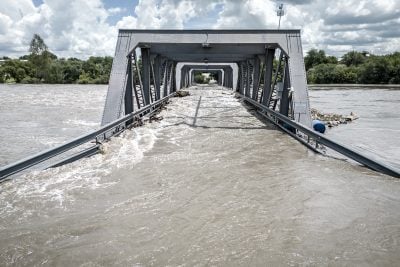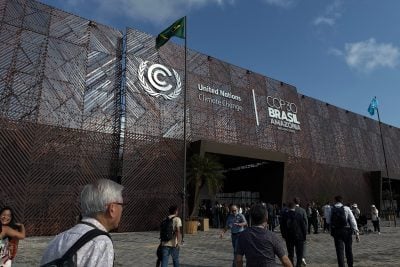Kenya has been one of Africa’s success stories in terms of progress towards the UN global Sustainable Development Goal of achieving universal electricity access by 2030. The country experienced one of the fastest increases in electrification rates within sub-Saharan Africa in the last decade.
By 2020, over 75% of the population had access to power, according to Kenya’s Energy and Petroleum Regulatory Authority (EPRA), and the government has said it plans to make it 100% within this decade.
That will require substantial investment given that many of those still without grid power are in more remote areas away from the easier-to-connect towns and cities of the more densely populated south, though low-cost off-grid solutions are helping here.
Kenya’s substantial achievements in electricity connectivity are, in any case, just the start of the journey in terms of investment in the power sector. Greater access to electricity means more demand for power, demand which is poised to rise fast if the Kenyan economy expands as fast as some expect.
Substantial investment needed
The International Energy Agency (IEA) forecasts in its Kenya Energy Outlook that, in its high-growth “Africa Case” scenario, Kenya would need to provide more than 80 TWh of electricity in 2040, more than five times levels seen in recent years.
That would require substantial investment in both generating capacity and transmission infrastructure, a chunk of it coming from the private sector, supported by guarantees and co-funding from international development institutions.
Attracting this investment will be made easier because Kenya has one of sub-Saharan Africa’s most developed power sectors. The private sector is highly active, and the country has been open to independent power producers since the mid-1990s. It also helps that Kenya Power, the country’s main offtaker, has proved a creditworthy partner for the industry.
Rising demand is likely to be met by an expansion of renewable energy complemented by some form of baseload power. Intermittent renewables solar and wind are already ramping up, and Kenya is one of few countries in the world to already be exploiting two existing renewable energy sources capable of providing low-carbon grid-scale baseload power: hydro and geothermal power.
Hydropower
Hydropower accounts for about 45% of power company KenGen’s installed capacity (around 825 MW), much of it from a series of dams on the Tana River, north-east of Nairobi.
But as is the case across much of Africa, unpredictable rainfall patterns are increasingly leading to periods of prolonged drought that lower river and reservoir levels, which in turn reduce power output.
Given its unreliable feedstock – water – hydro’s status as a major contributor to Kenya’s power mix is in question. The problem is further compounded because some dams are in a poor state of repair and require maintenance to maximise output.
Given the unreliability issues, hydropower is not a main plank of government plans to expand power generation to meet rising electricity demand. That’s partly because there aren’t enough potential sites that can be developed commercially and partly because climate change trends suggest droughts could get worse in future.
The International Energy Agency estimates that hydropower output in Kenya could slowly expand over the next two decades, doubling to around 7 TWh in 2040, but that would be a fraction of Kenya’s forecast power requirements by that time.
Investment in hydropower over the next few years is likely to be focused on rehabilitating existing power stations and relatively small-scale new projects.
The latter include the 15 MW Kaptis hydropower project, a run-of-the-river project under development near Lake Victoria. Developer Tembo Power and South African private equity fund manager Metier each hold 40% of the project.
This doesn’t mean hydropower won’t be an important source of power for Kenya, because – in addition to valuable smaller scale regional projects – the country is likely to be importing more electricity generated from hydropower in coming years, notably from Ethiopia.
The two countries have signed an agreement for Kenya to import hydropower from its northern neighbour, which would require upgrading cross-border interconnectors. Those imports could include power from the controversial $4.5bn Grand Ethiopian Renaissance Dam (GERD) on the Blue Nile, which started generating power in February 2022.
Geothermal
However, few countries would choose to rely on energy imports these days, if it can be avoided – the negative impact of Russia’s invasion of Ukraine on global energy trading has underscored the perils. So, Kenya is keen to maximise the potential of its other non-intermittent green energy, geothermal power, which generates power using steam from deep in the rock beneath the Rift Valley to power turbines.
The country is one of the global leaders in the sector, having been exploiting its geothermal resources for power since the Olkaria power station in the Hell’s Gate National Park started operating in 1981.
Currently, the country gets a larger share of its power from geothermal energy – almost half – than any other country in the world. It also exports its know-how to surrounding countries with geothermal resources, including Ethiopia, Rwanda and Djibouti.
Kenya’s installed geothermal capacity currently stands at 865 MW, most of it supplied by KenGen. Kenya wants to at least double that figure by 2030, which would meet an estimated 60% of power demand by then.

Rebecca Miano, KenGen’s chief executive, has said geothermal energy is central to Kenya’s power generation strategy.
In July 2021, she told Bloomberg that KenGen would invest $2bn in four new plants, as well as upgrades at Olkaria, over the next five years. This could add 400 MW of geothermal power capacity to the national grid. There is a lot of scope to scale up further. The government says the Rift Valley’s exploitable geothermal resources could total around 10 GW.
But geothermal energy is more expensive to produce than intermittent solar or wind power, even if it does have the advantage of being a reliable baseload power provider. The sector also carries similar risks to drilling for oil and gas in that drilling a geothermal well is expensive – up to $6m – and there is no guarantee that it will produce enough steam to be commercially viable.
Mindful of the risk, KenGen handles geothermal investments through a separate company, the Geothermal Development Company, in a bid to make investment more attractive.
Support is also coming from the international development community. FSD Africa, a UK agency seeking to strengthen financial markets across sub-Saharan Africa, said in October 2021 it would work with Parhelion, a UK-based energy and climate risk finance advisory company, to launch an underwriting facility, backed by East African insurers, to de-risk early-stage development of geothermal energy projects.
Doing so could significantly expand electricity access and energy sector resilience in Kenya and Ethiopia, FSD said. Other development institutions have supported the sector with co-funding, guarantees, or technical support.
Competition for investment?
Whether the potential of Kenya’s geothermal resources can be fully realised remains to be seen. Cheaper-to-build solar and wind energy could look more attractive to investors, especially if grid-scale battery storage becomes more ubiquitous and cheaper, effectively allowing those renewables to contribute to baseload power.
Other options under consideration by the government to provide baseload power, such as a mooted nuclear plant, could also make investment in geothermal – and other renewables – look less attractive in the long term.
But these factors are unlikely to play a role in power sector development during the next decade, so geothermal energy looks set to be a major investment destination in Kenya’s power sector for years to come.
Want to continue reading? Subscribe today.
You've read all your free articles for this month! Subscribe now to enjoy full access to our content.
Digital Monthly
£8.00 / month
Receive full unlimited access to our articles, opinions, podcasts and more.
Digital Yearly
£70.00 / year
Our best value offer - save £26 and gain access to all of our digital content for an entire year!
 Sign in with Google
Sign in with Google 



